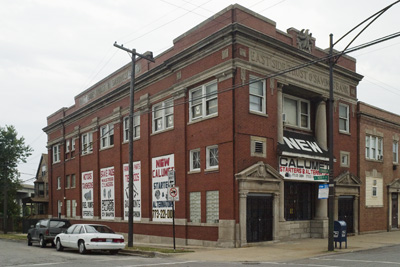East Side Trust & Savings was founded in 1919, the same year this bank was erected, and suspended operations July 1933. A stock subscription drive allowed the bank to regain enough capital to reopen Feburary 1934. In 1944, the company was reorganized as the South Side Bank and Trust, moving to the former South Side Trust and Savings Bank building at 4659 S. Cottage Grove. The company became Pullman Bank of Commerce and Industry in the 1970s and moved into a new building at 6100 Northwest Highway. In 1997 the bank was absorbed by Park National, which failed in 2009 and was in turn absorbed by U.S. Bank.


Clarence Hatzfield’s design is an arrangement of common classical revival motifs. Two columns marking the front, pediments broken by cartouches above the two main entrances. A relief sculpture of an eagle symbolizing something or other. Although currently in use as an auto parts store, this building has endured few modifications. The four large windows on the 101st Street elevation have been covered up by signs, but it wouldn’t be surprising if the original windows were still present. Same for the “New Calumet Starters & Alternators” sign covering the arched window on the Ewing side. Four street level windows have been replaced with glass block, and amusingly enough, air conditioner units have been fitted into the two square windows above the main doors. More surprising is that the face brick, limestone text plates, cornice, and eagle sculpture are untouched.
Hatzfield must have been good at following directions, either from plan books or clients. Compare this to another design of his, Immel State Bank, which looks exactly the same and completely different at the same time. However, his Jefferson Park National Bank deviates from the frumpy classical formula. Either way, he is more well known for his field houses, notably at Jefferson and Indian Boundary parks.



